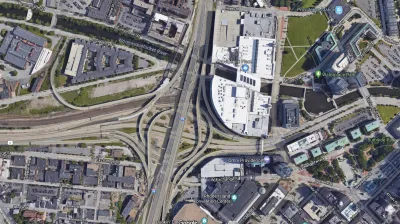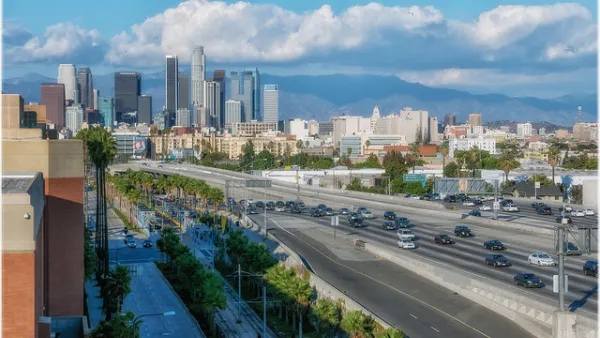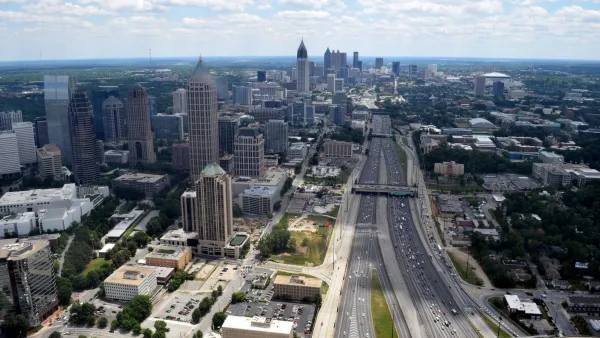The erroneous belief that the negative impacts of interstate highways are simply "unintended consequences" fails to demand accountability for the project's failures.

Writing in The Metropole, Sarah Jo Peterson argues that the popular origin story of the American interstate highway system is, at its core, a myth. "The myth goes something like this: the Interstate Highways were intended to be a system for intercity (or interstate) travel, but they had unintended effects for cities because they became used inappropriately for travel within urban areas." This myth, Peterson writes, perpetuates several erroneous beliefs: that "everything bad about the Interstates in cities is actually the fault of urban renewal and city leaders;" that "analyses of costs dictated which neighborhoods fell to the bulldozers;" and that despite initial mistakes, "public protests in the 1960s brought needed reforms."
Continued acceptance of this myth, Peterson claims, "prevents the industry from having to directly confront the sins committed in the name of the Interstate Highways, most significantly against Black Americans." The danger, she writes, is that the myth and the silence surrounding it "shape American transportation policy and practice in unacknowledged ways" to this day. Despite repeated attempts by the federal government to address historical injustices in transportation policy, the needle hasn't moved significantly where the communities affected by freeway construction are concerned.
Peterson traces the problematic myth to a U.S. Department of Transportation brief written in 1976, which became embedded in transportation planning curriculum. The author, Peterson claims, "actively constructed an alternative history," continually citing displacement and the other effects of urban freeways as "unintended" consequences.
"Weiner’s key studies—and more—are now online for all to see. Five reports, two published before 1956 and three shortly after, show that in no sense was the Interstate System intended only for intercity travel. Moreover, the assertion that the consequences of the Interstates in urban areas were 'unintended'—at least for what they called the 'total transportation needs' of the metropolis and the displacement of minority communities—is untenable. Top leaders anticipated these impacts, and yet the efforts they made to address them fell short."
Ultimately, Peterson argues that historical analysis is crucial to understanding and undoing the inequities of past and present transportation policies. "The federal government was–and always will be–a leader both in developing the Interstate System and in how its history is remembered. The federal government also needs to be a leader in helping the transportation industry understand the impacts of its history."
FULL STORY: The Myth And The Truth About Interstate Highways

Analysis: Cybertruck Fatality Rate Far Exceeds That of Ford Pinto
The Tesla Cybertruck was recalled seven times last year.

National Parks Layoffs Will Cause Communities to Lose Billions
Thousands of essential park workers were laid off this week, just before the busy spring break season.

Retro-silient?: America’s First “Eco-burb,” The Woodlands Turns 50
A master-planned community north of Houston offers lessons on green infrastructure and resilient design, but falls short of its founder’s lofty affordability and walkability goals.

Test News Post 1
This is a summary

Analysis: Cybertruck Fatality Rate Far Exceeds That of Ford Pinto
The Tesla Cybertruck was recalled seven times last year.

Test News Headline 46
Test for the image on the front page.
Urban Design for Planners 1: Software Tools
This six-course series explores essential urban design concepts using open source software and equips planners with the tools they need to participate fully in the urban design process.
Planning for Universal Design
Learn the tools for implementing Universal Design in planning regulations.
EMC Planning Group, Inc.
Planetizen
Planetizen
Mpact (formerly Rail~Volution)
Great Falls Development Authority, Inc.
HUDs Office of Policy Development and Research
NYU Wagner Graduate School of Public Service




























